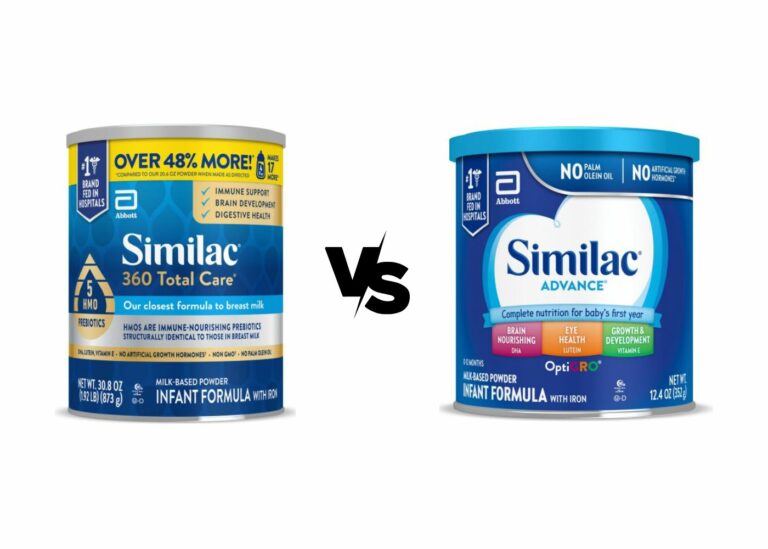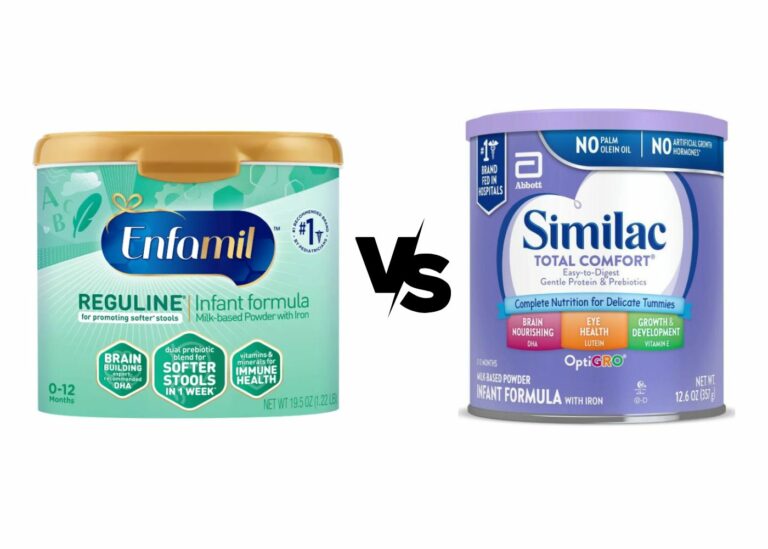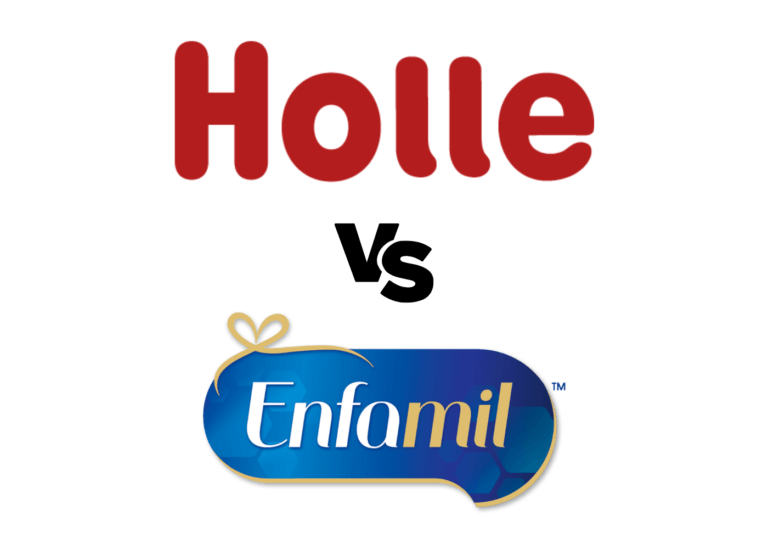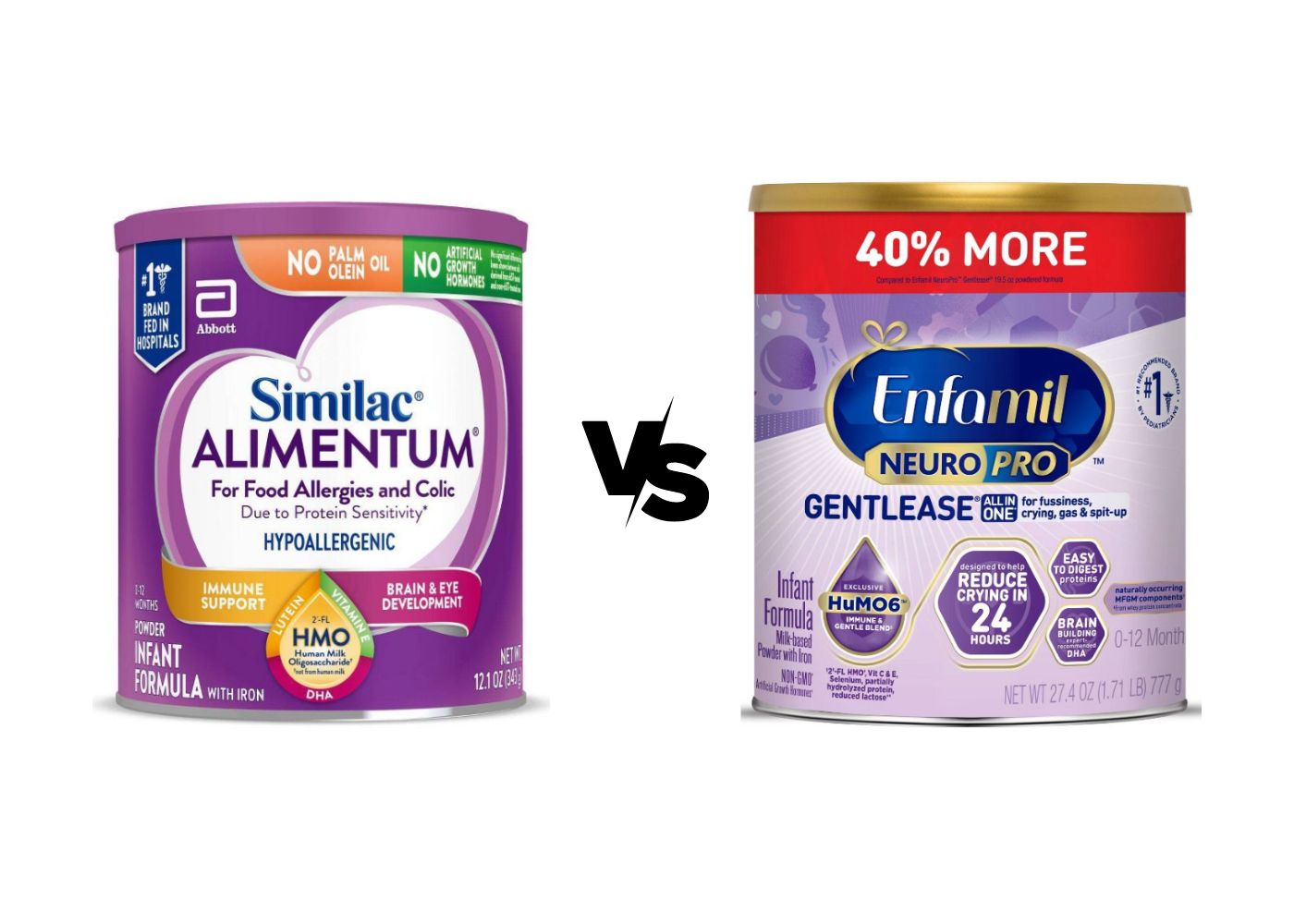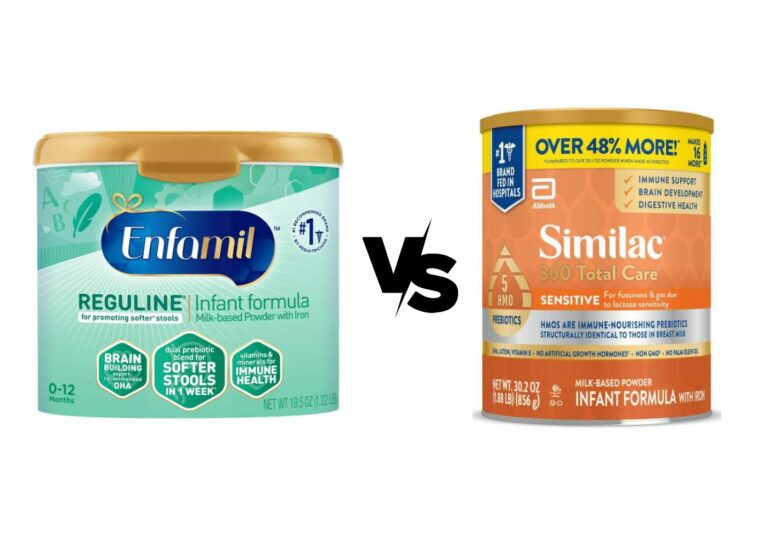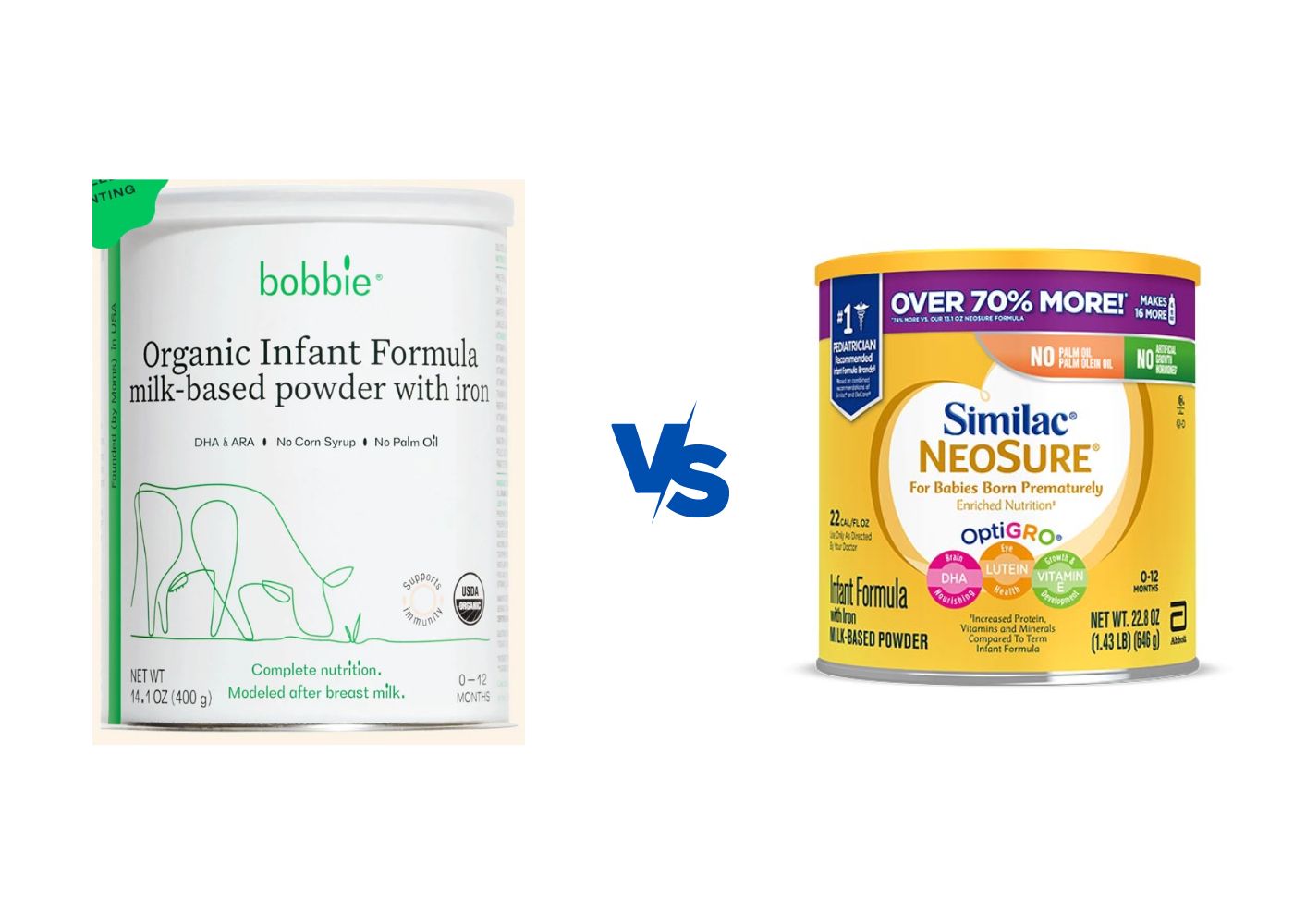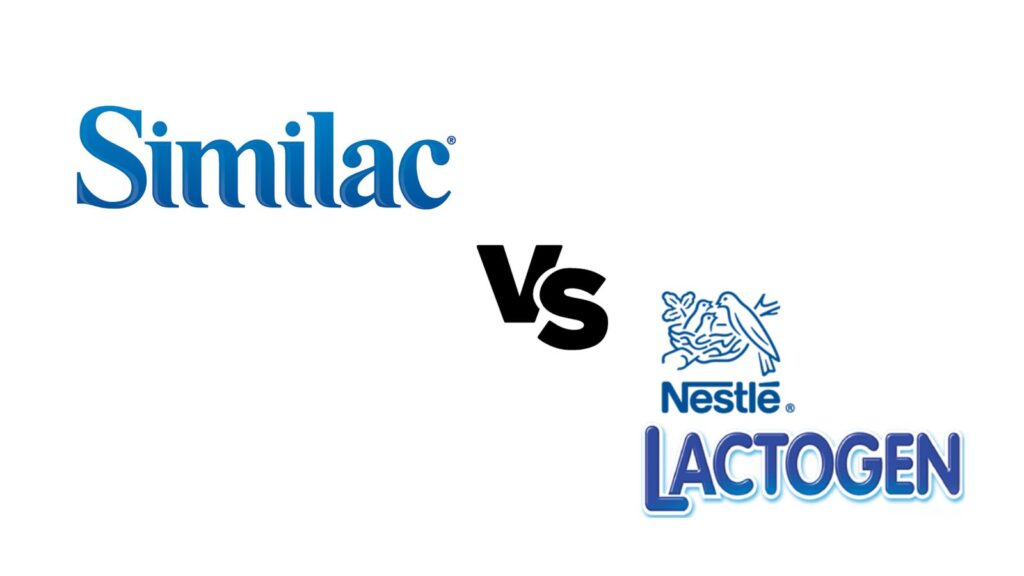
Key Differences Table Between Similac Advance and Lactogen
| Features/Aspect | Similac Advance | Lactogen Stage 1 |
|---|---|---|
| Ideal For | Babies with no problem digesting lactose | Babies with lactose sensitivity or digestive issues |
| Type | Milk-based formula | Milk-based formula with stage-specific nutrition |
| Primary Protein Source | Nonfat milk and whey protein concentrate | Nonfat milk and whey protein concentrate |
| Carbohydrate Source | Lactose | Lactose with added maltodextrin |
| Fats and Oils | Blend of high oleic safflower, soy, coconut oils | Blend of palm olein, soybean, coconut, high oleic sunflower oils |
| Nutritional Profile | Close to breast milk with OptiGRO™ (DHA, Lutein, Vitamin E), balanced nutrients | Essential proteins, carbohydrates, fats, vitamins, and minerals |
| Special Features | Non-GMO, no artificial growth hormones | Budget-friendly, designed for easy digestion |
| Ease of Digestion | Prebiotics for digestive health | Gentle ingredients for digestive comfort |
| Prebiotics/Probiotics | Contains prebiotics | Contains probiotics |
| Stage-Specific Formulation | Designed for babies from birth to 12 months | Tailored for infants from birth to 6 months (Stage 1) |
| Price Point | Higher priced | More budget-friendly |
This article aims to compare two popular formula brands: Similac vs Lactogen. We will analyze their two most popular formulas: Similac Advance and Lactogen Stage 1.
We will analyze their ingredients and nutritional composition to help you make the best decision for your baby.
Let’s get after it!
Our Short Answer
After analyzing the ingredients of both formulas, we cannot give you an absolute winner, but we can help you in your decision.
Choose Similac Advance if your baby:
- Has no problem digesting lactose.
Choose Lactogen if your baby:
- Has lactose sensitivity or has digestive problems when taking traditional formulas.
If you are not sure which one to choose, or you don’t know how your baby will react, we recommend starting with Similac Advance first, since in terms of ingredients, it is more natural than Lactogen.
That said, there are alternatives to both that are better. We’ve listed them below in the article.
Overview of the Two Formulas
Similac Advance is a milk-based formula mimicking breast milk with OptiGRO™ (DHA, Lutein, Vitamin E), balanced nutrients, no artificial growth hormones, and non-GMO ingredients.
Lactogen offers budget-friendly, stage-specific nutrition from birth to 24 months, focusing on digestive comfort and essential nutrients, making it accessible to more families.
Similac Advance
Similac Advance is a milk-based, iron-fortified infant formula designed for babies from birth to 12 months. It’s a formula that seeks to mimic the nutritional profile of breast milk, providing a spectrum of essential nutrients necessary for your baby’s development. Here’s a closer look at its key features:
- Close to Breast Milk: Similac Advance includes OptiGRO™, a blend of DHA, Lutein, and Vitamin E, which are vital for baby’s brain and eye development, and are also found in breast milk.
- Balanced Nutrition: It features an exclusive blend of nutrients, including calcium for strong bones and prebiotics for digestive health.
- No Artificial Growth Hormones: Similac sources its dairy ingredients from cows that are not treated with artificial growth hormones, although it’s worth noting that the FDA states that there is no significant difference between milk derived from rBST-treated and non-rBST-treated cows.
- Non-GMO: The ingredients in Similac Advance are non-GMO.
Lactogen
Lactogen is another well-recognized name in the baby formula sphere, known for its budget-friendly options without compromising on nutritional value. It is designed for infants from birth to up to 24 months, depending on the stage-specific formulation. Here’s what you need to know:
- Tailored Nutrition: Lactogen stages ensure the formula meets the changing nutritional requirements as your baby grows. Lactogen 1, for example, is tailored for babies 0-6 months.
- Digestive Comfort: Some variants of Lactogen include gentle ingredients that can aid in your baby’s digestion, which may be particularly beneficial for those babies who experience minor digestive discomfort.
- Essential Nutrients: Lactogen provides the necessary proteins, carbohydrates, fats, vitamins, and minerals that are essential in an infant’s diet.
- Affordability: Typically, Lactogen is priced cheaper than other formula brands, making it accessible to a wider range of families.
Nutritional Composition
Similac Advance and Lactogen both use cow’s milk proteins (nonfat milk and whey protein concentrate), suitable for standard infant formulas.
Advance’s primary carbohydrate is lactose, closely resembling breast milk, while Lactogen adds maltodextrin, beneficial for lactose sensitivities.
Similac Advance’s fat blend, excluding palm olein, is preferable for optimal calcium absorption compared to Lactogen’s inclusion of palm olein.
Protein Content
Protein is the building block of your baby’s muscles, skin, enzymes, and hormones. It supports not only growth but also the proper functioning of nearly every system in the body.
- Similac Advance: The protein in Similac Advance is derived from nonfat milk and whey protein concentrate. It’s processed to be easily digestible and to maintain a balance similar to breast milk. This formula aims to support the baby’s overall growth and development of lean muscle.
- Lactogen: With Lactogen, the protein also comes from cow’s milk sources. The proteins are adjusted in quantity and structure to be softer and easier on an infant’s developing digestive system, much like natural breast milk.
Both formulas use the same protein sources, being skimmed milk and whey protein concentrate. These are the standard sources of protein in standard formulas.
Carbohydrate Content
Carbohydrates are vital for your baby’s energy. They are important for physical activity, brain function, and other organ systems’ development.
- Similac Advance: The primary carbohydrate source in Similac Advance is lactose, the closest in composition to the lactose found in human breast milk. Lactose helps in the absorption of calcium and also supports the growth of healthy gut bacteria.
- Lactogen: Lactogen formula uses lactose as its primary carbohydrate source, but it also adds maltodextrin. This ingredient is an alternative to lactose that could benefit babies with lactose sensitivities.
As a standard formula, Advance has a better source of carbs, because nothing is better than lactose. However, for babies who have issues when consuming lactose-only formulas, then maltodextrin is a great alternative, much better than corn syrup solids.
Fats and Oils
Fats are essential in an infant’s diet, necessary for supporting brain development, absorbing vitamins, and providing energy.
- Similac Advance: Among the fats included in Similac Advance are a blend of vegetable oils such as high oleic safflower, soy, and coconut oils. These are chosen to match the fatty acid profile of breast milk, which is critical for brain and vision development, particularly the fatty acids DHA and ARA.
- Lactogen: Similarly, Lactogen also contains a mix of vegetable oils, including palm olein, soybean oil, coconut oil, and high oleic sunflower oil, to provide the necessary fatty acids required in an infant’s diet. Lactogen also includes DHA and ARA.
Similac Advance comes on top in fat content, for the simple fact of not using palm olein. This ingredient has been linked with poor calcium absorption if consumed regularly. This is why some formulas with palm olein add extra calcium to compensate for this.
Prebiotics and Probiotics
Advance has prebiotics and Lactogen has probiotics. Babies with sensitivities or allergies might benefit more from probiotics than prebiotics.
However, generally, science says it’s better to choose a formula with prebiotics rather than with probiotics. The benefits of including prebiotics instead of probiotics are better studied and known.
Probiotics and prebiotics in infant formulas are designed to enhance your baby’s digestive health and potentially boost their immune system. Similac Advance and Lactogen feature these gut-friendly components, each with specific ingredients tailored to support your infant’s digestive tract.
Similac Advance is fortified with galactooligosaccharides, or GOS, which function as prebiotics. GOS are akin to dietary fibers that serve as food for beneficial gut bacteria.
Lactogen, on the other hand, goes a step further by containing a probiotic known as Lactobacillus reuteri. Probiotics are live bacteria that confer a health benefit on the host when administered in adequate amounts. Lactobacillus reuteri has several benefits, including reducing colic, improving digestion, and enhancing immunity.
What are the Best Alternatives to Similac and Lactogen?
Even though Similac and Lactogen are well-known brands, there are better options in the market in terms of purity and quality. Here are our favorites:
- Kendamil: Our favorite formula is Kendamil, which uses human milk oligosaccharides (HMOs) and whole milk from family-owned farms. HMOs are a group of structurally diverse unconjugated glycans abundant in human breast milk and essential for developing the infant gut microbiota. *Read: Kendamil vs Similac
- Bobbie: As our top US brand pick, Bobbie impresses with its simple ingredient list and commitment to providing organic nutrition. It boasts a milk-first approach, closely mirroring breast milk’s natural composition, and it shies away from using corn syrup solids or palm oil. *Read: Bobbie vs Similac
- Hipp: For babies experiencing digestive discomfort, Hipp is our selection. With a blend of prebiotics and probiotics designed to balance your little one’s gut bacteria, Hipp formulas can be a soothing option for sensitive tummies, also offering formulas catered to various dietary needs, including cows’ milk protein sensitivities. *Read: Hipp vs Similac
- Holle: If the purity of ingredients is at the top of your list, then Holle, with its Demeter Certification, is the best formula to consider. This certification ensures the formula is produced following biodynamic farming practices, some of the world’s most stringent and holistic organic farming standards. *Read: Holle vs Similac
Last Words
We hope this comparison helps you choose the best formula for your baby. If you have further questions, we’ll be happy to answer them. Just leave a comment below or contact us and we’ll help you out!
Happy feeding!
We’re Maria and Alberto, a married couple and educators who are nutrition enthusiasts. Even before we had kids, we were already crazy about nutrition.
We’d read scientific articles, watch videos from nutritionists, and spend hours listening to nutrition podcasts.
Today, we continue doing this, but in a different way, as we’ve learned to sift through the noise and trends. Nutrition, like any other field of knowledge, the more you read and learn, the more you develop a comprehensive understanding of reality, and that’s what has happened to us.
Before having our first child, we focused on learning everything we could about child nutrition, using the same techniques we had already employed, backed by our extensive knowledge in nutrition.
Our mission is to help other parents with their children’s nutrition, to help them become the best versions of themselves.
If we are what we eat and drink, which is absolutely true, let’s do it right!


